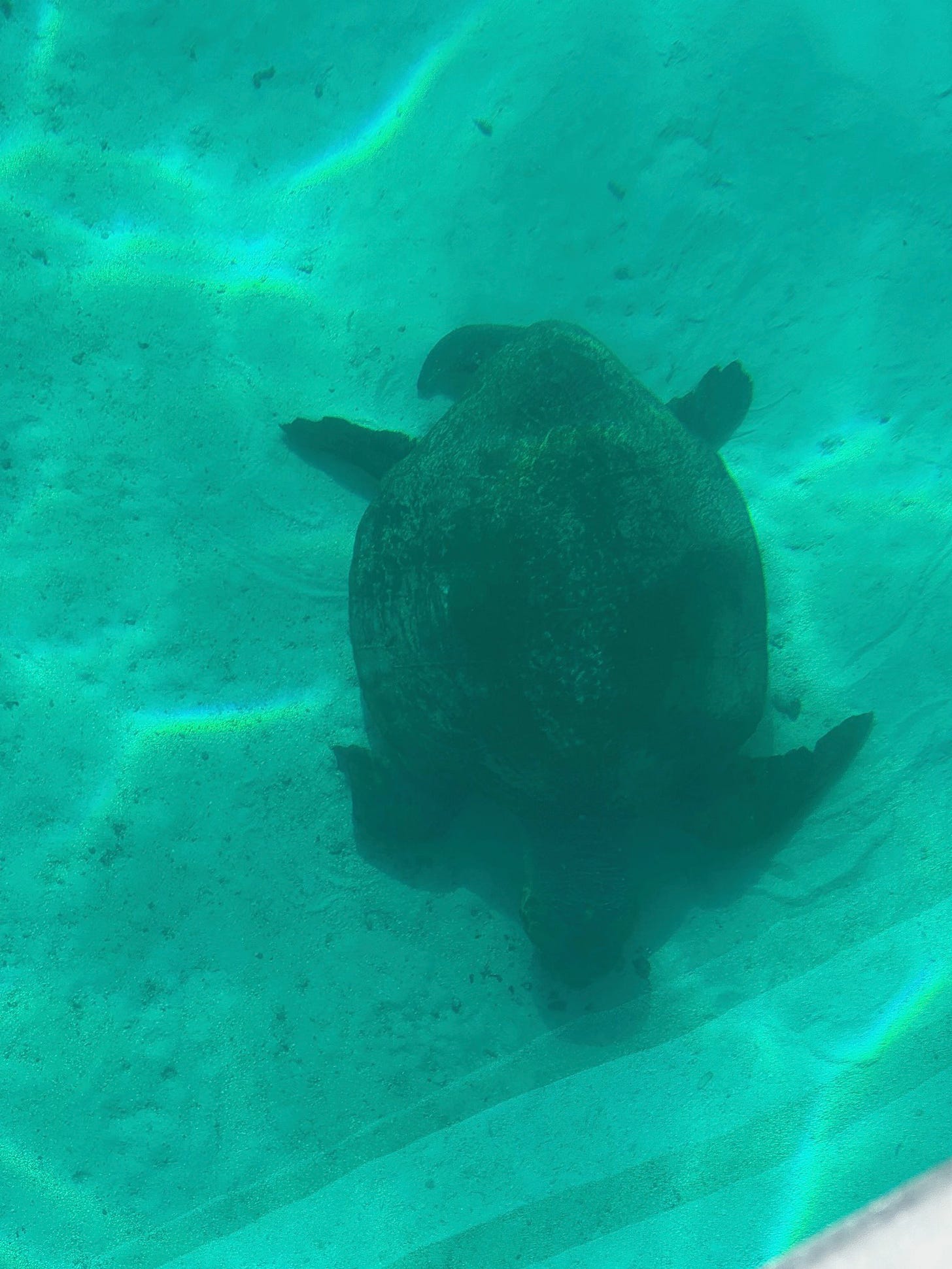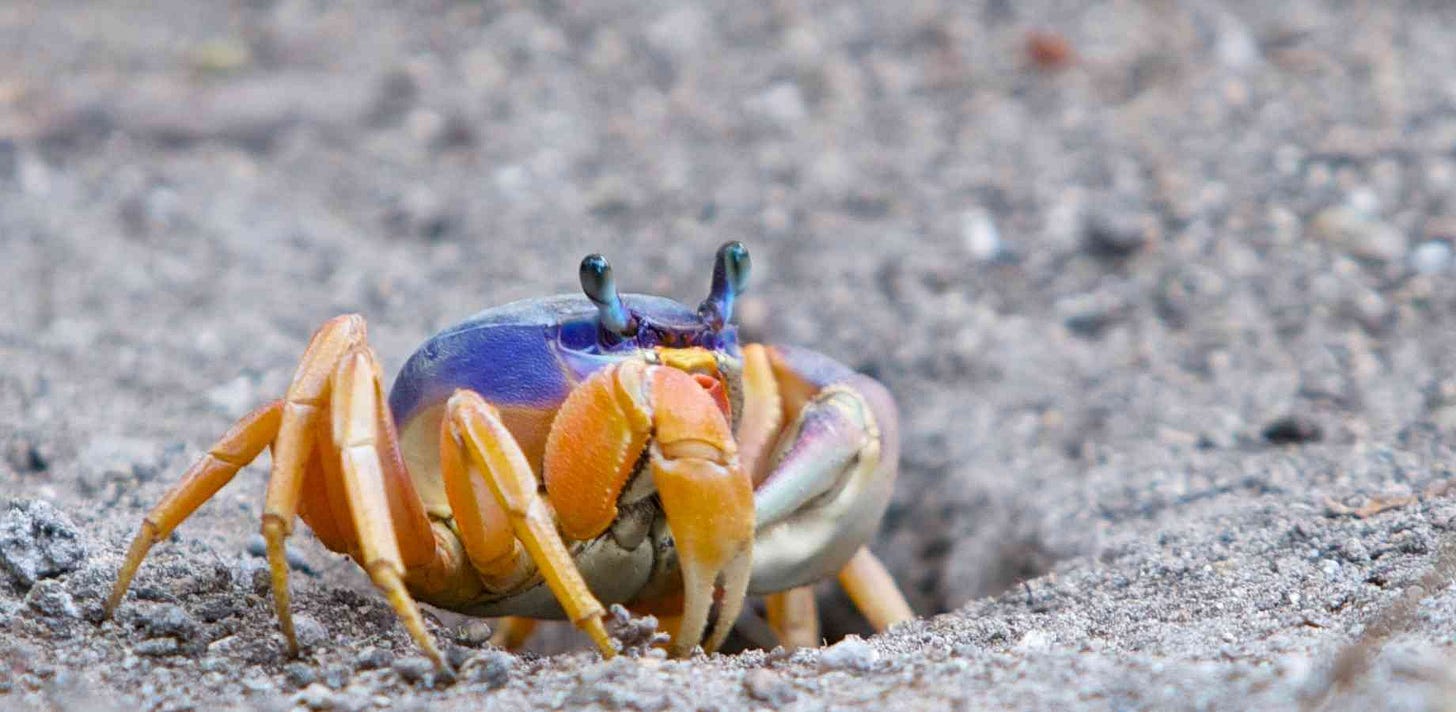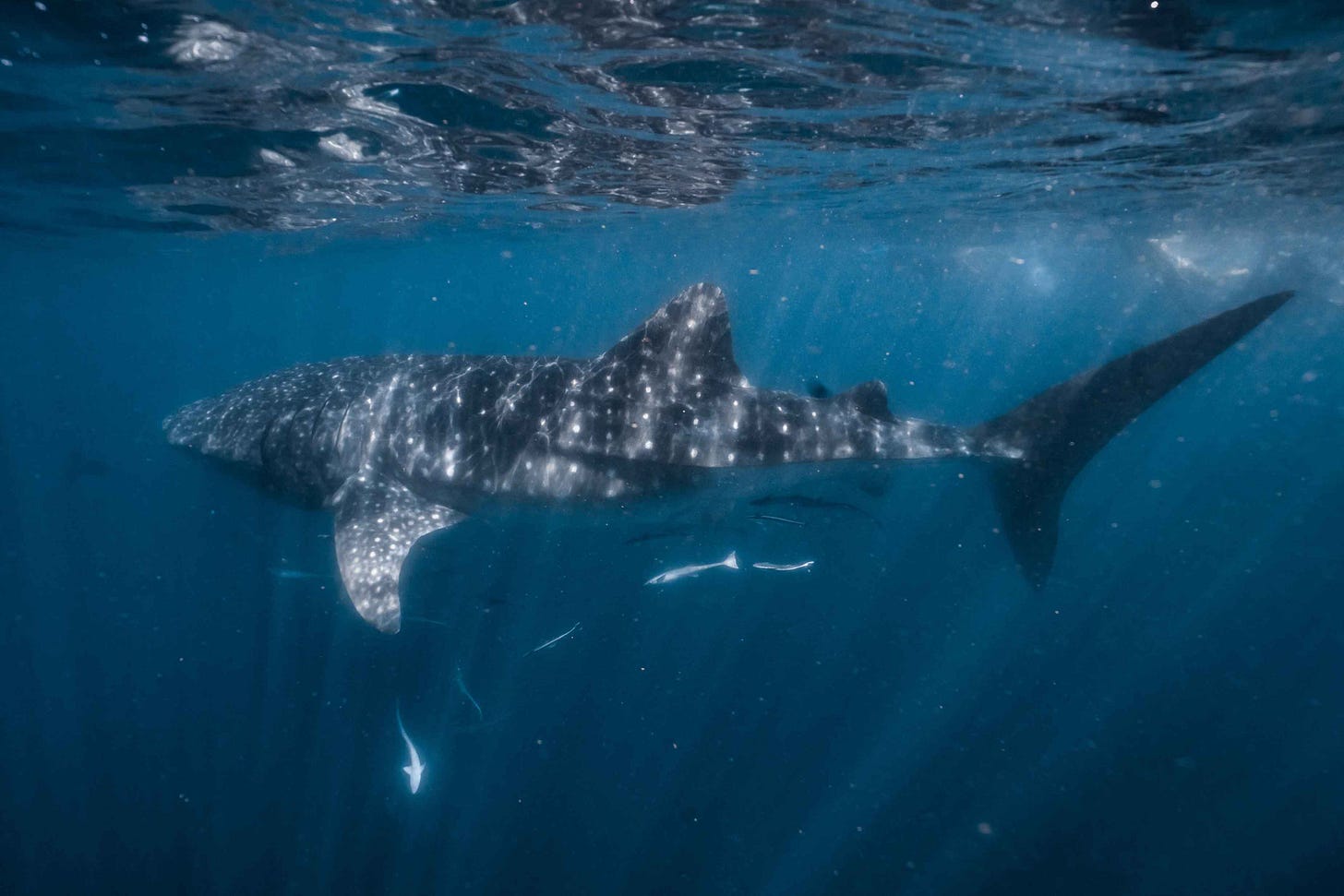
Along the Western Australian coast, between Coral Bay and the North Cape at Exmouth, lies Ningalooo Reef. So the days we were there before the total solar eclipse were spent snorkelling this fringing reef.
I. Snorkel tour @ Coral Bay
Monday April 17, we took a snorkel + whale shark spotting tour with Ningaloo Reef Whalesharks at Coral Bay. I’d bought a plastic phone protection bag in order to be able to take pictures underwater. I had tested it at home by filling it with a few rolls of toilet paper—which immediately show water if there’s a leak—and immersing it for about 12 hours. It remained water tight (the toilet paper was dry).
On the other hand, I had just recently bought this iPhone 14 Pro Max (with 1 TB of storage so all my music—uncompressed—and all my pictures and videos are on it, with room to spare, for the future). This isn’t a cheap phone, so the risk of the protection failing was always on my mind. Then it appeared that a professional underwater photographer—with a special camera with a huge lens—was joining us, and he offered us his pics for AU$ 85. That was a no-brainer, and I left my iPhone on the vessel. The photographer was Daniel Nicholson, and all the great pictures adorning the first part of this article are his. Check out his website: Daniel Nicholson Photography.
This day started with a snorkel swim at a part of Ningaloo Reef nearby. Basically Coral Bay is at the south part of Ningaloo Reef. I was a bit uncertain at what to expect as I hadn’t snorkelled in this spot before (while I had snorekelled at Ningaloo Reef near Exmouth in 1999). In was a mixed blessing. There were a huge amount of fish, and as I entered the water one of the your guides said: “Did you see the stingray? It’s right below you.”
As I looked down I had to look very carefully as the stingray was partly submerged under the sand—a very effective camouflage. But eventually I noticed its outline and its eyes. Great! Also a beautiful large mollusc.
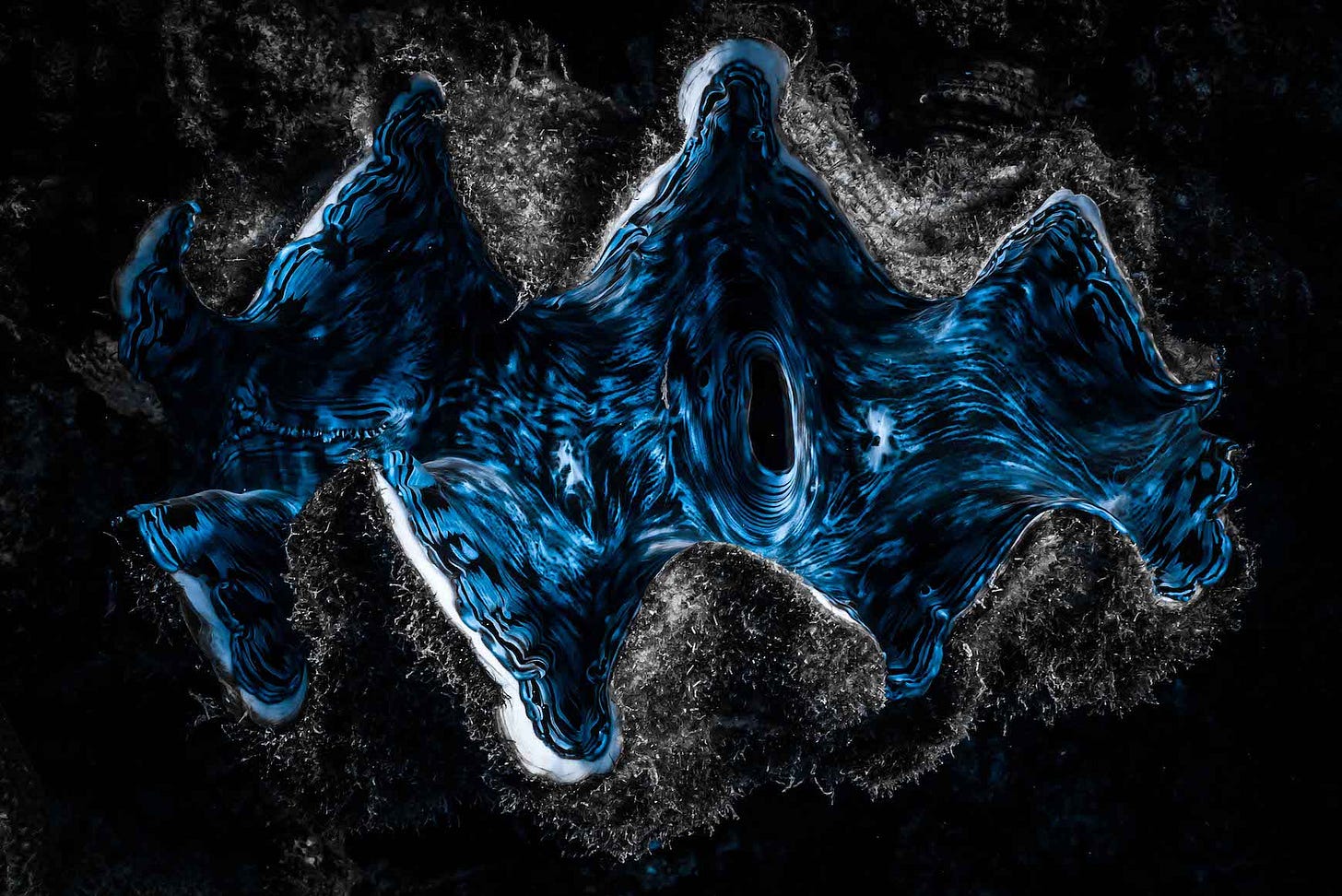
However, I couldn’t help but notice that much of the coral was bleached. There were some colourful corals, mostly staghorn corals with pruple pointy ends and some spots of green coral, but otherwise the coral looked very bleached to my untrained eye. This didn’t seem to deter all the fish, as there was a huge amount of fish swimming around. If that’s a good sign meaning the coral is recovering or a bad sing meaning the fish stick it out as long as possible I cannot say. While the fish were wonderful, the coral bleaching made me a little bit sad.
This article says that, on average, a coral reef needs 9 to 12 years to recover from a bleaching event—if there is no other disturbance such as another bleaching event or a cyclone in the meantime.
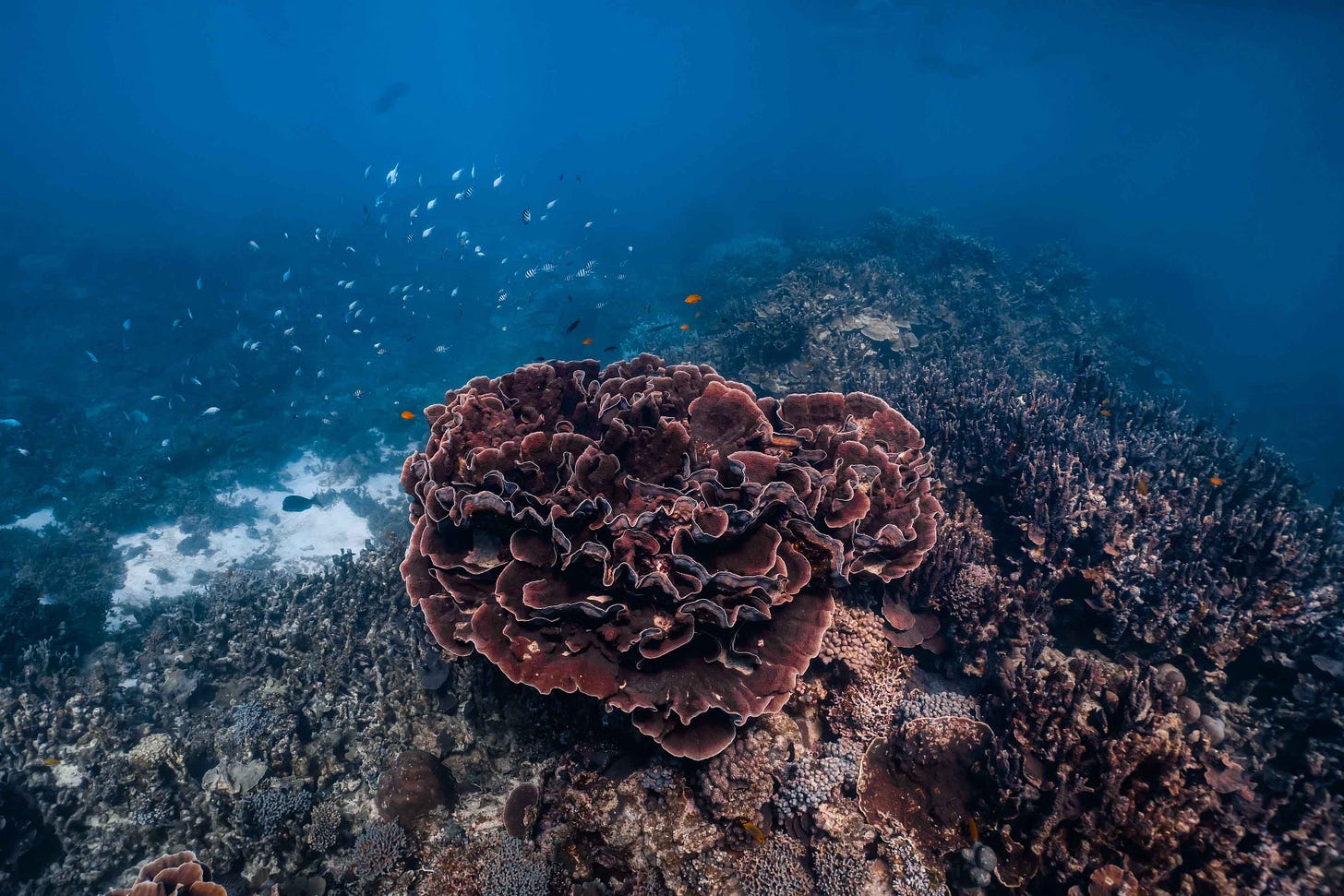
Neverthless, the biggest part of this tour was spotting, and hopefully swimming with a whale shark. Due to the sea being rough in the aftermath of Cyclone Ilsa, there hadn’t been any tours in Coral Bay for quite a while. Also, if I understood correctly, they hadn’t spotted a whale shark in a month or more. And while they use a plane to search the area just outside of the reef for whale sharks—their natural habitat—finding one cannot be guaranteed.
But we were lucky as they spotted one. Swimming along with a whale shark—who can be from 9 to 18 metres long—needs to be prepared. Snorkellers need to be at least 3 metres away from it from the sides, and at least 4 metres near its head. Also, it moves pretty fast, so you can only keep up with it for a short while. We were divided into two group of ten people, of which five people had to position themselves—as pointed by the tour guides—at one side of the whale shark, five at the other side. First group in the water while the second one sits stand-by with fins on and snorkel masks at the ready to immediately get in the water once the first group was finished. Then rinse and repeat.
I have to give a big compliment to the people from Ningaloo Reef Whalesharks, as they explained and executed this plan very well. We were able to swim along the whale shark—they say it was about 12 metres long—a juvenile—three times. The first time I was barely in the water and the tour guide said: “It’s there,” and pointed down and as I looked below the surface I saw I was positioned close to its head and could see the whale shark very clearly.
Wow!
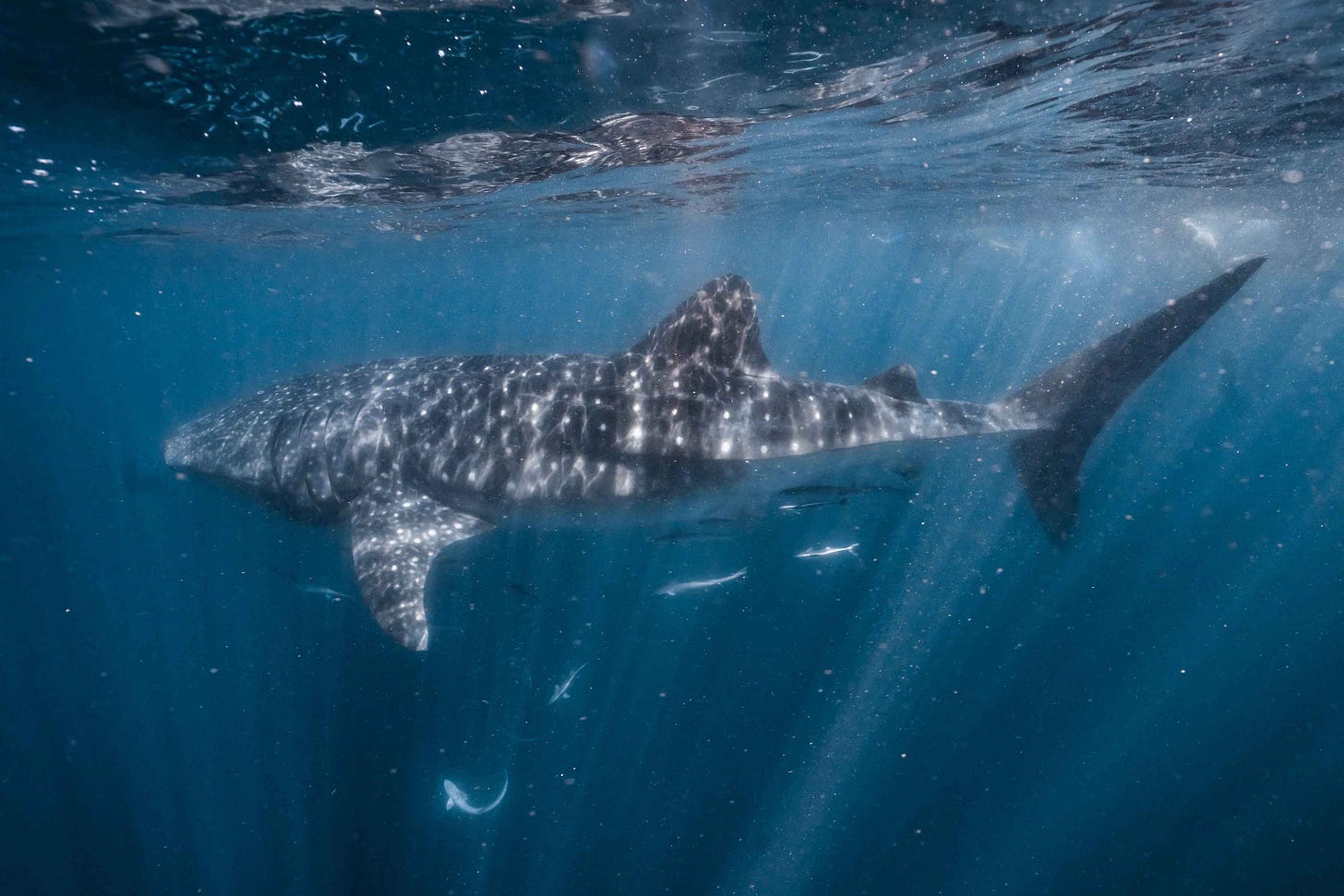
A beautiful animal1, indeed. Smaller fish were swimming alongside its gills. The top of the whale shark is spotted—Dan the photographer explained that individual whale sharks could be identified by the pattern of these spots—while the bottom side is white. In a way, it wasn’t dissimilar to watching a solar eclipse; that is, you can only watch it for a short while—a limited time—but while you’re watching it, it’s absolutely awesome.
On the one had, the whale shark—not even one of the biggest individuals—made me feel small and vulnerable. On the other hand, it swam with such grace and serenity—and I know it feelds on plankton—that I didn’t feel threatened. This was another highlight of a very exciting trip.
After swimming along three times with the whale shark it went too far away, but by then everybody was completely thrilled and happy. We did another snorkel swim just before heading back to the pier, and this one was quite similar to the first snorkel swim—many, many fish, but also mainly bleached coral with only a few colourful examples. Also, a big turtle atop a sandy spot (see picture). Typically, I remember the first time I snorkeled Ningaloo Reef—back in July 1999—that there was no bleaching at all. I certainly hope that Nongaloo Reef finds a way to recover.
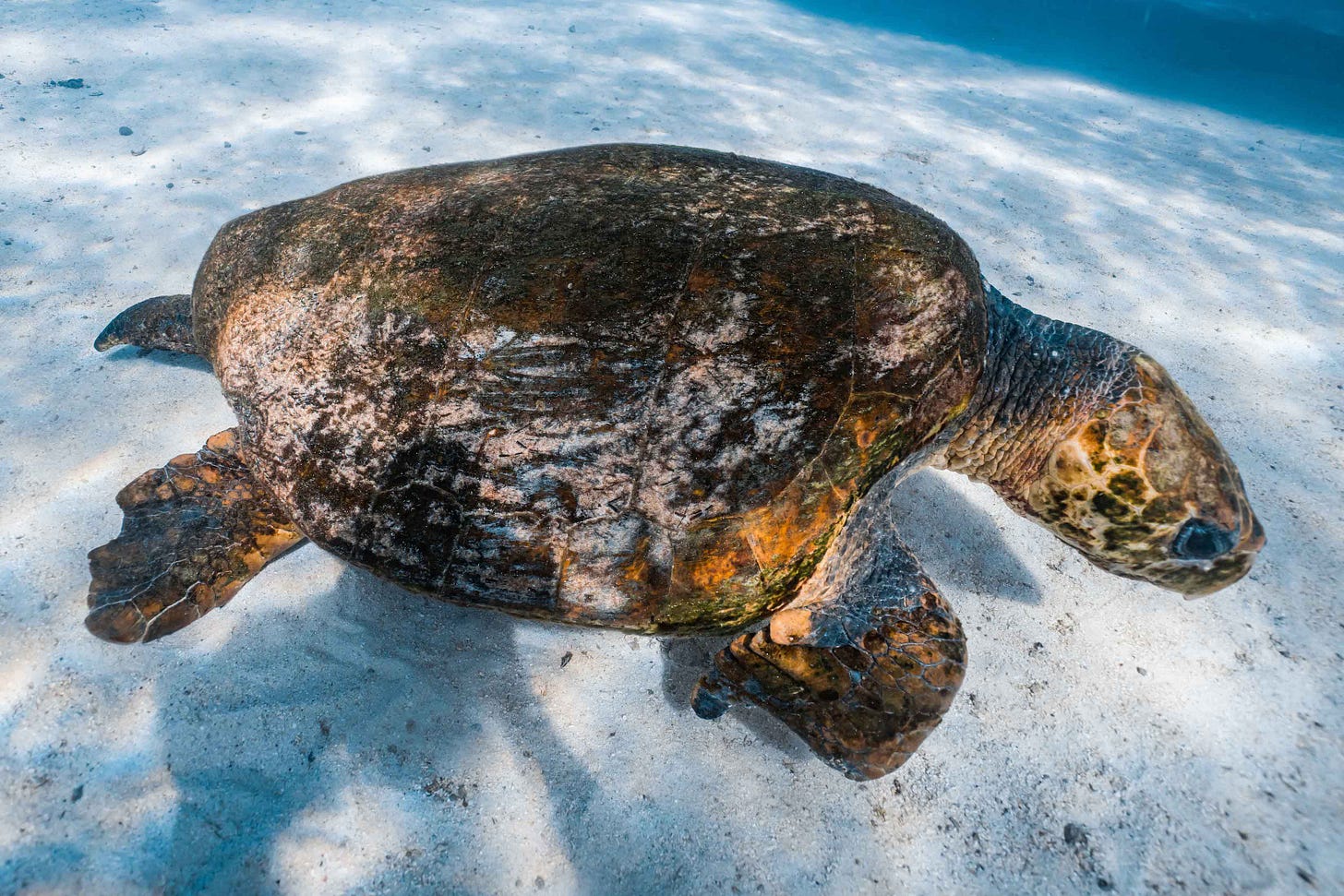
During the total solar eclipse of November 12, 2013 in Port Douglas my sister and I went snorkelling at the Great Barrier Reef nearby, and it was totally bleached. I had been in Port Douglas sometime in the 90s, and back then that part of the Great Barrier Reef was healthy and basically an explosion of colours. It was the first time I snorkelled at a coral reef, and it was a breathless, incredibly amazing experience. In 2013 I wondered if I was colouring my memories of the 90s with a bit too much vibrancy, but my sister was as disappointed as me (she had also snorkelled at the Great Barrier Reef over a decade ago). In any case, anybody who believes Global Warming is a hoax should check the world-wide events of coral bleaching. It is to cry.
In any case, I can heartily recommend Ningaloo Reef Whalesharks if you want to try to swim with a whale shark in Coral Bay. Do note that this can only be done during whale shark season from March 1 to 31 July, with the best time usually mid-season in April or May2.
II. Snorkel tour @ Exmouth
Tuesday April 18, we took a snorkel tour near Exmouth with Cape Immersion.
This was a more ‘normal’ snorkel trip, meaning we didn’t go far out to chase whale sharks. This tour concentrated on the north side of Ningaloo Reef (see also the track maps.me app made of that trip, above).
During the trip from the first to the second spot, we spotted dolphins—some small groups and one large pod—plenty of turtles (according to our guide Ningaloo has a healthy population of turtles) and the odd stingray.
The second snorkel spot was the best, in my opinion. A huge amount and highly diverse amount of fish and a reef that, while still partly bleached, seemed very much one the road to recovery. Stingrays, reef sharks, and even an octopus (although I, unfortunately, didn’t spot it).
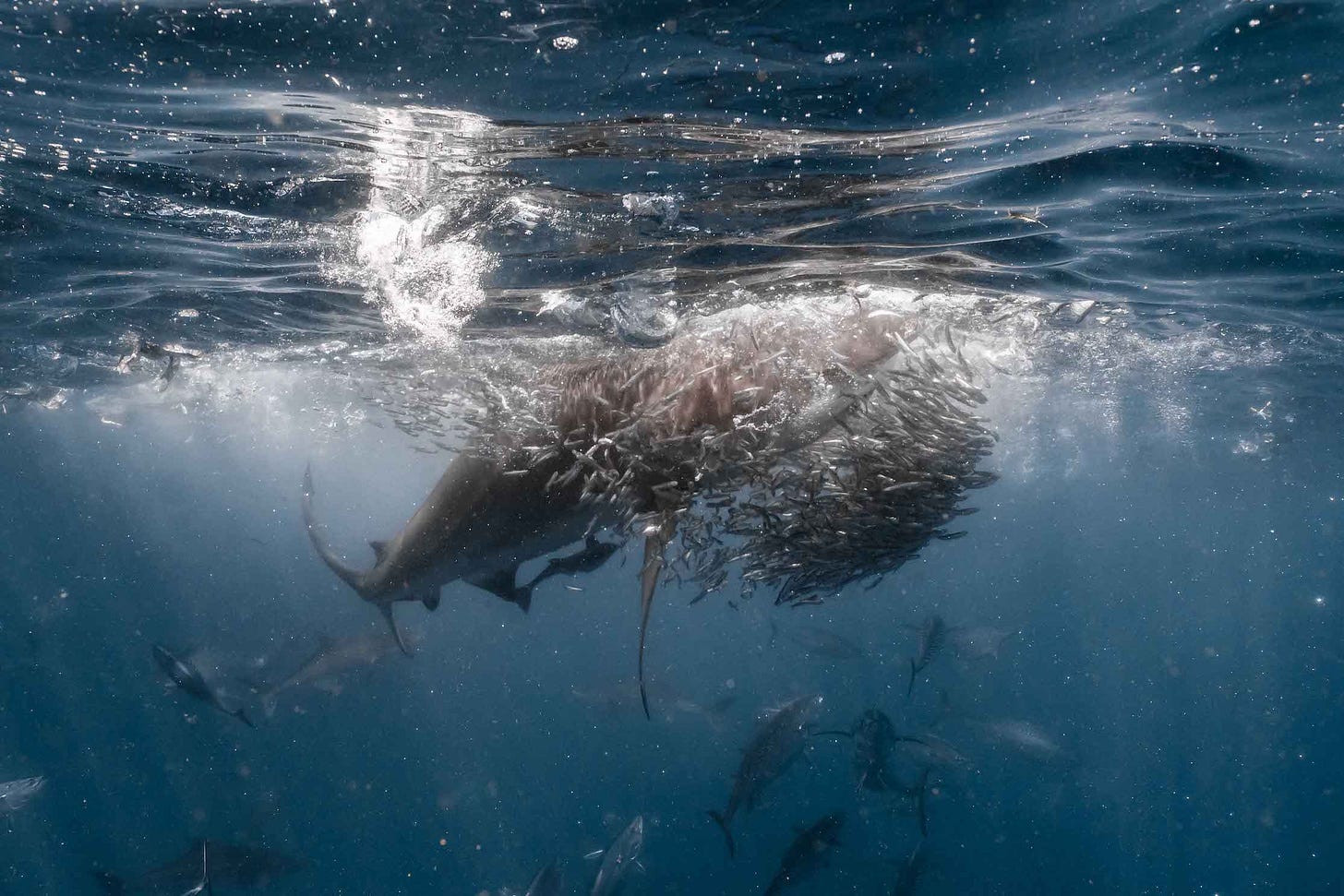
After the second snorkel swim, we headed for the beach at Mangrove Bay. While the boat remained anchored close to the coast, we were advised to explore the beach while the crew prepared lunch. So we did, and it was worth it. I only regret not taking my iPhone with me (out of fear it would get wet), because there were a few nice things to see.
One was the budding of new mangrove trees: small seedlings trying to stay rooted in the up-and coming tides. Another was a slew of small crabs about five to ten centimetres wide. Colourful little buddies who would open their claws if you approached them too closely (obviously trying to show they can be dangerous), but would burrow themselves between the wet sand—where they looked like little rocks—as well.
Finally, we were lucky enough to see a small baby shark swimming in the shallow tidal waters. Like all children, baby sharks look lovely. Until they grow up, of course…;-)
As if to follow up on that, I saw a few reef sharks on the third and final snorkel swim. Between one and two metres long, they—most probably—won’t attack humans (unless they feel threatened), but they looked impressive nonetheless. Also a lone stingray swimming along the bottom, and more fish than I’ve ever seen at a reef in a very long time. Also, the northern part of Ningaloo Reef had much more colourful coral—along with bleached parts, unfortunately—so gave, to an amateur observer like me, the impression of a more healthy (and hopefully recovering) reef.
Some googling reveals that there has been a bleaching event at Ningaloo Reef in 2011. In particular nearby Coral Bay, which correlates with my—decidedly non-professional—observances. Keeping a 9 to 12 year recovery period in mind, it seems that Ningaloo Reef is recovering, although—again, to my untrained eye—the north side near Exmouth is recovering better than the south side at Coral Bay. Also the abundance of fish at both locations seems to indicate that the coral has stopped bleaching and is recovering. Also, this article says that “Butterfly fishes are considered ‘canaries of the reef’ due to their strong reliance on coral.” Well, I did see plenty of butterfly fishes at the Exmouth side of Ningaloo Reef, so this fills me with hope that it is indeed recovering.

This snorkel trip was also very good, a bit smaller scaled—we were with eleven people rather then the twenty-one during the Coral Bay tour—and a bit more relaxed, as this time we were not chasing a whale shark (just saying that the tight organisation at the Coral Bay tour was absolutely necessary for a successful whale shark viewing). So I can also heartily recommend the people from Cape Immersion at Exmouth for a snorkel trip. The snorkel sights were very, very good (and encouraging) and the little trip at the beach before lunch was the little cherry on the cake. Highly recommended.
Oh well, while I do have plenty more pictures of the whale shark thanks to Dan the photographer, I’m only going to show two. By way of encore here’s the tail of the whale shark.

Author’s Note: all the breathtakingly beautiful pictures are by Daniel Nicholson (I asked permission to show these on my blog, however the copyright—of course—remains his), the more mundane ones—as noted—are from my iPhone.
Steve Irwin RIP;
So our timing was perfect…;-)





